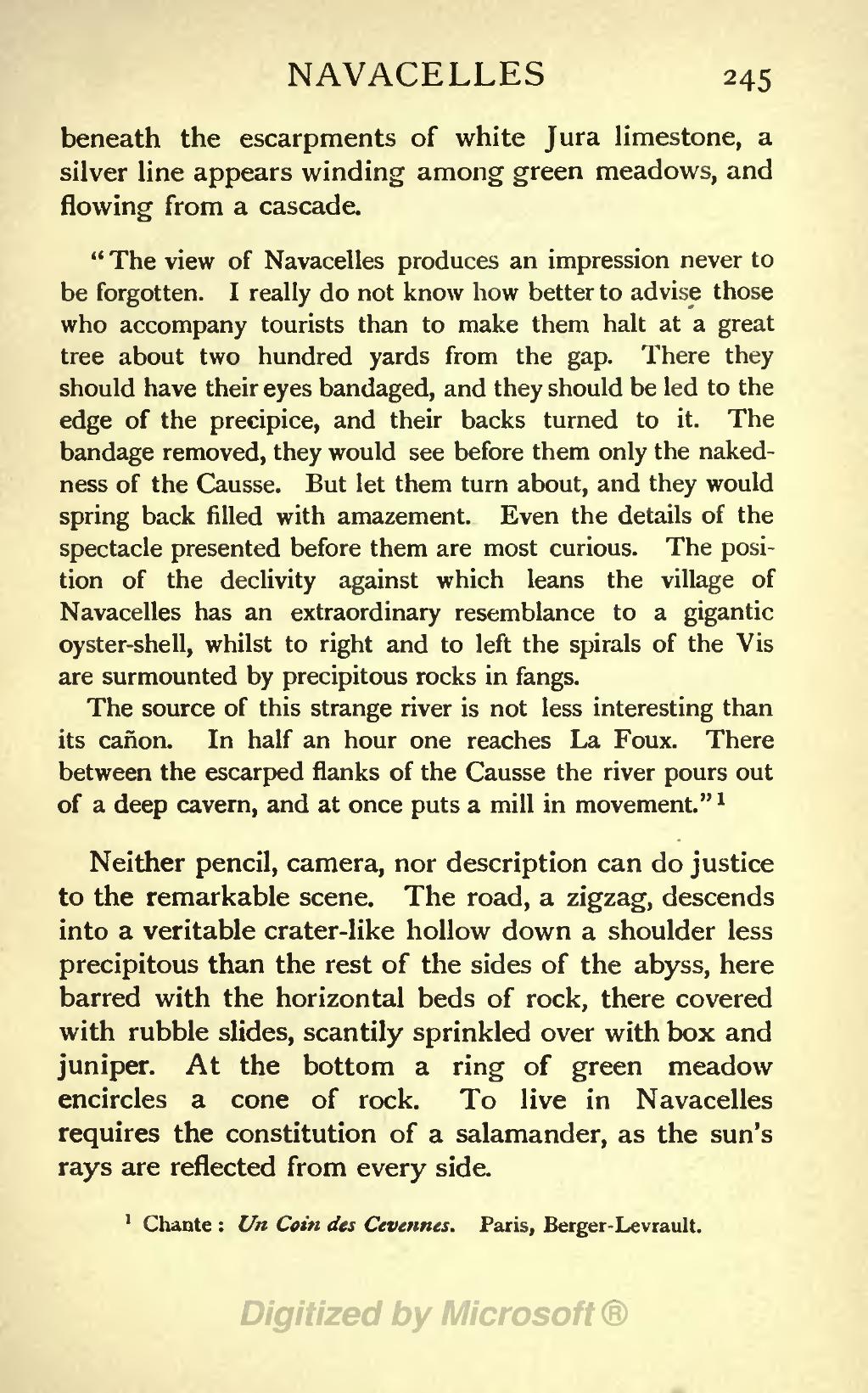beneath the escarpments of white Jura limestone, a silver line appears winding among green meadows, and flowing from a cascade.
"The view of Navacelles produces an impression never to be forgotten. I really do not know how better to advise those who accompany tourists than to make them halt at a great tree about two hundred yards from the gap. There they should have their eyes bandaged, and they should be led to the edge of the precipice, and their backs turned to it. The bandage removed, they would see before them only the nakedness of the Causse. But let them turn about, and they would spring back filled with amazement. Even the details of the spectacle presented before them are most curious. The position of the declivity against which leans the village of Navacelles has an extraordinary resemblance to a gigantic oyster-shell, whilst to right and to left the spirals of the Vis are surmounted by precipitous rocks in fangs.
The source of this strange river is not less interesting than its cañon. In half an hour one reaches La Foux. There between the escarped flanks of the Causse the river pours out of a deep cavern, and at once puts a mill in movement."
[1]}}
Neither pencil, camera, nor description can do justice to the remarkable scene. The road, a zigzag, descends into a veritable crater-like hollow down a shoulder less precipitous than the rest of the sides of the abyss, here barred with the horizontal beds of rock, there covered with rubble slides, scantily sprinkled over with box and juniper. At the bottom a ring of green meadow encircles a cone of rock. To live in Navacelles requires the constitution of a salamander, as the sun's rays are reflected from every side.
- ↑ Chante: {{tooltip|Un Coin des Cevennes|A Corner of the Cevennes. Paris, Berger-Levrault.
